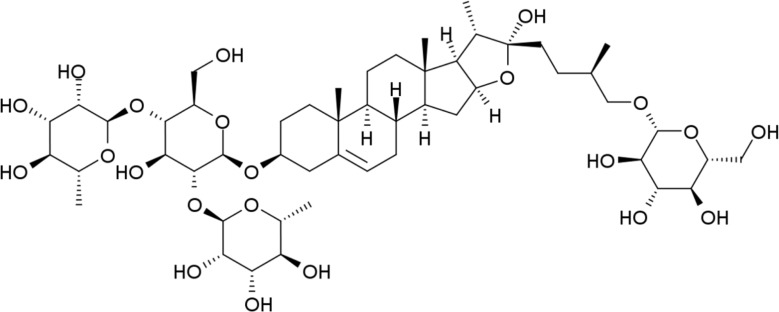Lab Anim Res.
2018 Mar;34(1):44-47. 10.5625/lar.2018.34.1.44.
Anti-coccidial activity of the ethanol extract of Tribulus terrestris fruits on Eimeria tenella
- Affiliations
-
- 1Center for Animal Resource Development, Wonkwang University, Iksan, Korea. kimoj@wku.ac.kr
- 2Technlogy Service Division, National Institute of Animal Science, Rural Development Administration, Wanju, Korea.
- 3Institute of Animal Experiment & Efficacy Evaluation, Animal Disease Research Unit, Wonkwang University, Iksan, Korea.
- KMID: 2430885
- DOI: http://doi.org/10.5625/lar.2018.34.1.44
Abstract
- Anti-coccidial effects of the fruits of Tribulus terrestris (Tribuli fructus) ethanol extract (TTE) were studied with animal experiment following per oral administration with Eimeria (E.) tenella. This experiment was performed on the 3-day-old chicks (n=30). The animals were divided with 3 groups; TFE 15mg per animal+infected (n=10), TTE untreated+infected (n=10) and non-infected control (n=10). Animals were administrated with or without TTE during 1 week, and then inoculated with E. tenella. The anti-coccidial activity were evaluated with oocysts shedding numbers in stools, body weights changes and food intake changes. The TTE-inoclated animals revealed significantly decreased stool oocysts numbers (P < 0.05) when compared to the TTE untreated animals. Also, TTE-treated animals showed more increased body weight gains (P < 0.05) than the TTE untreated animals. These results demonstrate that TTE produce anticoccidial activities against E. tenella. TTE could be a promising treatment for the coccidiosis.
MeSH Terms
Figure
Reference
-
1. Dalloul RA, Lillehoj HS. Poultry coccidiosis: recent advancements in control measures and vaccine development. Expert Rev Vaccines. 2006; 5(1):143–163. PMID: 16451116.
Article2. Williams RB. Relative virulences of a drug-resistant and a drugsensitive strain of Eimeria acervulina, a coccidium of chickens. Vet Parasitol. 2006; 135(1):15–23. PMID: 16361061.3. Kaingu F, Liu D, Wang L, Tao J, Waihenya R, Kutima H. Anticoccidial effects of Aloe secundiflora leaf extract against Eimeria tenella in broiler chicken. Trop Anim Health Prod. 2017; 49(4):823–828. PMID: 28315138.4. Zhang JD, Xu Z, Cao YB, Chen HS, Yan L, An MM, Gao PH, Wang Y, Jia XM, Jiang YY. Antifungal activities and action mechanisms of compounds from Tribulus terrestris L. J Ethnopharmacol. 2006; 103(1):76–84. PMID: 16169173.5. Chhatre S, Nesari T, Somani G, Kanchan D, Sathaye S. Phytopharmacological overview of Tribulus terrestris. Pharmacogn Rev. 2014; 8(15):45–51. PMID: 24600195.6. Borran M, Minaiyan M, Zolfaghari B, Mahzouni P. Protective effect of Tribulus terrestris fruit extract on cerulein-induced acute pancreatitis in mice. Avicenna J Phytomed. 2017; 7(3):250–260. PMID: 28748172.7. Hammoda HM, Ghazy NM, Harraz FM, Radwan MM, ElSohly MA, Abdallah II. Chemical constituents from Tribulus terrestris and screening of their antioxidant activity. Phytochemistry. 2013; 92:153–159. PMID: 23642392.8. Al-Bayati FA, Al-Mola HF. Antibacterial and antifungal activities of different parts of Tribulus terrestris L. growing in Iraq. J Zhejiang Univ Sci B. 2008; 9(2):154–159. PMID: 18257138.9. Dinchev D, Janda B, Evstatieva L, Oleszek W, Aslani MR, Kostova I. Distribution of steroidal saponins in Tribulus terrestris from different geographical regions. Phytochemistry. 2008; 69(1):176–186. PMID: 17719068.10. Lee HA, Hong S, Chung Y, Kim O. Sensitive and specific identification by polymerase chain reaction of Eimeria tenella and Eimeria maxima, important protozoan pathogens in laboratory avian facilities. Lab Anim Res. 2011; 27(3):255–258. PMID: 21998616.11. Stotish RL, Wang CC, Meyenhofer M. Structure and composition of the oocyst wall of Eimeria tenella. J Parasitol. 1978; 64(6):1074–1081. PMID: 739302.12. Bourke CA, Stevens GR, Carriqan MJ. Locomotor effects in sheeps of alkaloids identified in Australian Tribulus terrestris. Aust Vet J. 1992; 69(7):163–165. PMID: 1445080.13. Yan W, Ohtani K, Kasai R, Yamasaki K. Steroidal Saponins from Fruits of Tribulus terrestris. Phytochemistry. 1996; 42(5):1417–1422. PMID: 9397208.14. Soleimanpour S, Sedighinia FS, Safipour Afshar A, Zarif R, Ghazvini K. Antibacterial activity of Tribulus terrestris and its synergistic effect with Capsella bursa-pastoris and Glycyrrhiza glabra against oral pathogens: an in-vitro study. Avicenna J Phytomed. 2015; 5(3):210–217. PMID: 26101754.
- Full Text Links
- Actions
-
Cited
- CITED
-
- Close
- Share
- Similar articles
-
- Anticoccidial effects of the Houttuynia cordata extract on experimental animal infection model
- Inhibition of Helicobacter pylori-induced inflammation in human gastric epithelial AGS cells by the fruits of Tribulus terrestris L. extracts
- Effects and Mechanism of Action of a Tribulus terrestris Extract on Penile Erection
- Anticoccidial effects of the Plantago asiatica extract on experimental Eimeria tenella infection
- Anticoccidial effects of the root bark of Dictamnus dasycarpus Turcz extract on experimental Eimeria tenella infection


